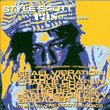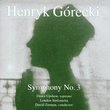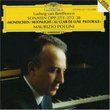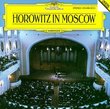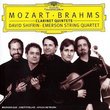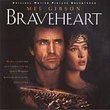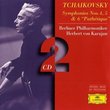| All Artists: Dmitry Shostakovich, Bernard Haitink, London Philharmonic Orchestra Title: Shostakovich: Symphony No. 7 Members Wishing: 0 Total Copies: 0 Label: Decca Release Date: 8/8/2000 Album Type: Original recording reissued Genre: Classical Styles: Historical Periods, Modern, 20th, & 21st Century, Symphonies Number of Discs: 1 SwapaCD Credits: 1 UPC: 028942506824 |
Search - Dmitry Shostakovich, Bernard Haitink, London Philharmonic Orchestra :: Shostakovich: Symphony No. 7
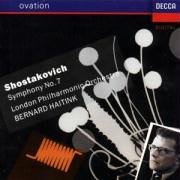 | Dmitry Shostakovich, Bernard Haitink, London Philharmonic Orchestra Shostakovich: Symphony No. 7 Genre: Classical
|
Larger Image |
CD DetailsSimilar CDsSimilarly Requested CDs |
CD ReviewsFine Recording of a Musical Monument Karl Henning | Boston, MA | 07/09/2002 (5 out of 5 stars) "The seventh (`Leningrad') symphony is a special case in all of music, but particularly in the twentieth century. I shall take the most unusual tack possible with this piece: I will concentrate principally on the music, and on this performance. A lot of the "news around the piece" gets in the way of the piece, indeed, for may of us, absolutely determines how we hear the piece. In a way, this is only perfectly natural, given the symphony's extraordinary circumstances. But I think we may gain a better understanding of the music itself, by a certain distance from the extra-musical discussion.The first movement is a combination of a sonata-allegro design, and a loose set of variations on a repeated theme, very deliberately modeled on Ravel's "Boléro," which interrupts the sonata-design architecture.The opening of the movement is earnest, even something heroic, in an unfeigned manner a little unusual for Shostakovich, whose "upbeat" music often takes sharply ironic turns; there are moments when you almost think, "Copland might have written such a passage." The second theme, beginning in the strings, then with an answer in the solo oboe & woodwinds, and the string choir which follows, is light and pastoral in character. And Haitink with the LSO brings this ease and grace out of the score with effortless simplicity.Stopping here for just a moment, it is obvious that this piece stands in marked contrast to Shostakovich's three prior symphonies. This is music entirely different to the overwhelmingly tense and strident fourth symphony, to the melancholy introspection of the fifth symphony (whose "triumphant" finale, even, raises more questions than it solves), to the restless unease of the sixth. Whatever the external circumstances of the composer's life before and during the composition of the seventh symphony, he is saying something in this music here, which is in sharp contrast to the symphonies immediately preceding.The first movement is one of the most difficult of Shostakovich's symphonic movements to bring off, musically; and the quasi-"Boléro" march interruption is the reason. It breaks in upon the sonata design, and then, it is (deliberately, there can be no question that this is every measure what Shostakovich wanted to do here) a little wooden-headed. The tune itself is simple, folksy, even a little carefree; in this way, it is entirely unlike the sensuous, yearning, arching tune of the Ravel "model." Like the "Boléro," though, the variations are not variations in the shape or make-up of the melody, but a process of evolving orchestration. There is a sense, really, in which Shostakovich `improves' upon Ravel's example, or accomplishes something very different, at least. The accumulating texture in the Ravel is essentially just a written-out crescendo (a modesty and simplicity of aim which is probably at the heart of Ravel's tongue-in-cheek, "I have written only one masterpiece, the "Boléro"; unfortunately, it contains no music"); where in the Shostakovich, the shifting orchestration alters the character of the melody.The propaganda of wartime publicized this repeated march as the Nazi invasion of Russia, and siege of Leningrad (the famous "900 days"); while according to Shostakovich as Solomon Volkov reports in (the admittedly controversial) "Testimony," the symphony is not about the city that Hitler sought to destroy, but about the city which Stalin had crippled, and which Hitler "merely finished off." The simplistic "programmatic" view of the first symphony, then, has been to see Stalin's boots imprinted in this interruptive march. I think both that this is a little easy, and yet that there is something in it. The tune begins in perfectly beguiling innocence (indeed, it is so unassuming a melody, that Bartok savagely parodies it in his Concerto for Orchestra) ... in which it is hard to find any illustration of Stalin at all. And even when towards the end of the tune's transformation, it is blared out in the brasses, the tune does not strike me, strictly speaking, as an evil thing, but as a simple thing turned to evil use.The second movement, Moderato (poco allegretto), begins in something of a Beethovenian vein; there is a combination of modesty, purpose and grace in the string opening, and in the solo oboe which enters to float above the strings. This movement in particular makes this symphony stand out in contrast to almost any other of Shostakovich's symphonic works, most of which have a scherzo, an entire movement in which Shostakovich uses his gift for affective rhythmic exaggeration. Some of his scherzi rage (in the tenth), some of them thumb their nose ("Humor" in the thirteenth), some dance on the edge, so that you wonder the dancer is intoxicated, or even in his right mind (the fifth and eighth). But we don't have an entire movement of this in the seventh symphony; and we have but a taste of it here in this second movement, when the Beethovenian/Tchaikovskian grace is intruded upon by a high-wailing clarinet, itself subsequently quieted by purposeful, martial brass. And these martial brasses also furnish a contrast to Shostakovich's other symphonies: in many other symphonic moments, the brass are a brute wall of menace (third movement of the fourth, first movement of the eighth, second movement of the tenth); but here (and in a manner richly consonant with the first movement) the brass are genuinely heroic, military in a noble sense. The strings take up the clarinet's wailing theme, but even so, the urgency of the wail is reduced, and we have begun the process of returning to the opening material; the breathy flutes and the bass clarinet are yet another example of Shostakovich's brilliant use of the orchestral pallette. It is even a kind of restoration, when the clarinet returns, in its "proper character," balanced and graceful.The chorale sections of the third movement have always been my favorite part of this symphony. Shostakovich somehow favored the clarinet in the high register; and in this chorale, he "humanizes" this timbre (in a way opposite to the "wail" of the second movement)." More Than a Patriotic Poster Christopher Forbes | Brooklyn,, NY | 08/09/2002 (5 out of 5 stars) "Shostakovitch's 7th symphony has always been a victim of it's dramatic myth and early success. Written during the siege of Leningrad in WWII and smuggled out of the city, the symphony was embraced by the Allies during the war and conducted to great acclaim by Toscanini. After the war, however, as the Cold War deepened, it was dismissed by many, even those who admired other works by the composer, as a piece of "social realist propaganda". It's a shame, because this work has greater depths than that label might suggest.The 7th Symphony reveals it's wartime subject only in a few places, mostly in the first and second movements. Most obviously you have the famous "Theme and Variations" development, where Shostakovitch's seemingly innocuous first theme is gradually brutalized by the orchestra, leading to a shattering climax. And yet, most of the work is darker, less propaganda than lament. The third movement in particular seems gorgeously tragic. The Haitink series with the Concertgebow is a wonderful Shostakovitch cycle, one that I aquired in it's last incarnation. Haitink is not usually a conductor that I think of as exciting, but he rises to Shostakovitch very well. (The composer seems to get the best out of a lot of mediocre conductors. Rostropovitch does Shostakovitch extremely well, even though most of the rest of his tenure with the National Symphony was unspectacular. Same holds true for Maxime Shostakovitch.) This CD would make a good choice for this wonderful symphony." Compelling and Magnificent ! Jeffrey Lee | Asheville area, NC USA | 01/27/2003 (5 out of 5 stars) "For me, the Seventh is the sovereign of the Shostakovich symphonies. I am mesmerized by its sometimes stark dignity and grandeur. Haitink marvelously reveals these qualities, as evidenced particularly in his journey through the adagio. Listen to the purity of expression he draws from the strings, and with it, at times, an aching, flowing, singing musical line. Also, in the opening movement, with its recurring march tune theme, he conveys an impression of rock steady command, and there's the poignant evocation towards the movement's close. A quiet sense of mystery carries into the final movement, where soon things become more visceral and immediate. Throughout, Haitink stays ably committed to the music's outspokenness, with its colorful and kaleidoscopic declarations and subtleties. As the final portions unfold he projects a compelling seriousness and ultimately, with cumulative power, an intense feeling of stateliness...The London Philharmonic plays gloriously. In both interpretation and sound, this is an A-1 disc."
|

 Track Listings (4) - Disc #1
Track Listings (4) - Disc #1